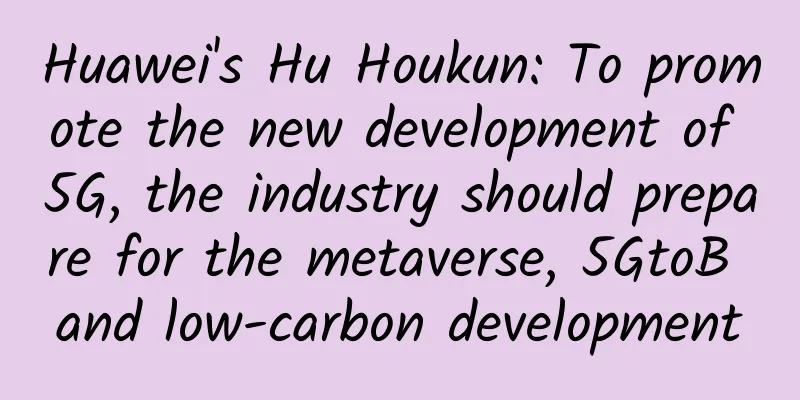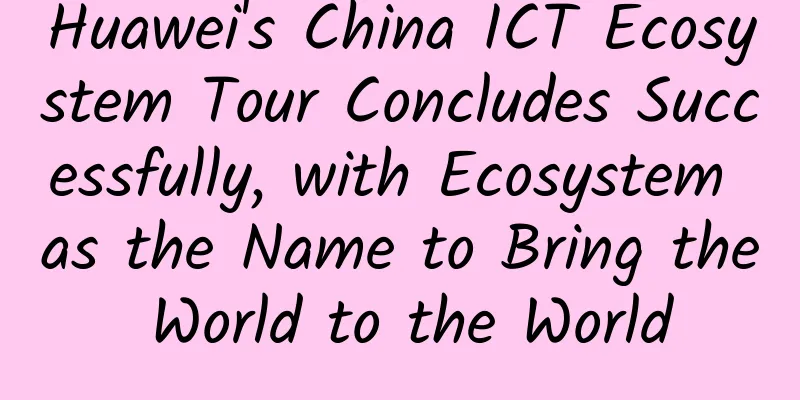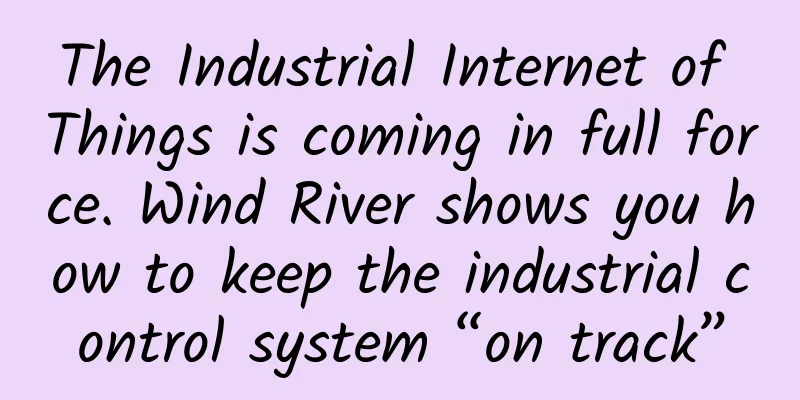Huawei's Hu Houkun: To promote the new development of 5G, the industry should prepare for the metaverse, 5GtoB and low-carbon development

|
On October 13, the 2021 Global Mobile Broadband Forum (Global MBB Forum) with the theme of "5G and the World" was held in Dubai. During the forum, Huawei's rotating chairman Hu Houkun delivered a keynote speech entitled "Based on the present, shaping the future". Hu Houkun pointed out: "In the five years since the pre-commercial use of 5G, it has brought about an improvement in consumer experience and a breakthrough in industry enablement, and has made progress beyond expectations in terms of user scale, network coverage, and terminal development." In order to promote the new development of 5G, Hu Houkun believes that the industry should actively prepare for XR business, 5GtoB market and green and low-carbon development. Ken Hu delivers a keynote speech at the 2021 Global Mobile Broadband Forum Hu Houkun believes that the development speed of 5G is far beyond expectations. At present, 176 5G commercial networks have been deployed worldwide, with more than 500 million users. In the consumer field, 5G has achieved a 10-fold increase in speed and brought new applications such as VR and 360-degree video live broadcast. In the enterprise market, more than 10,000 5GtoB projects have been carried out worldwide, constantly incubating 5G business innovation. In the fields of manufacturing, mining, ports, etc., replication has begun. He also pointed out that more than half of the 5GtoB projects took place in China. At the same time, 5G has found suitable application scenarios in some industries, but has not yet formed a sustainable business model. Ken Hu emphasized, "From individuals to industries, from technology to business, from digital transformation to social development, everything is changing rapidly. The epidemic has greatly accelerated the digitalization process. Cloud and AI have become must-haves for the digital transformation of the industry. Green development has also become a global consensus. These are having a profound impact on the ICT industry." Only by taking positive actions can we respond to changes more agilely. Hu Houkun believes that we can actively prepare in three aspects. First, we need to prepare for XR in terms of network, terminal and content. At the network level, we need to provide a network latency of no more than 10ms and a downlink rate of more than 4.6Gbps to meet the needs of cloud XR services, which is also one of the important directions in Huawei's 5.5G vision. At the terminal level, we need to lower the threshold and provide lighter, smaller and cheaper terminal headsets. At the same time, we need to enrich XR content and use cloud platforms and convenient development tools to enable developers to produce application content more efficiently. These measures will accelerate the arrival of the inflection point for the commercialization of XR services. Secondly, we need to prepare for 5GtoB by strengthening the network and building soft capabilities. The network is the foundation of 5GtoB services, and we need to continuously improve uplink and positioning capabilities and build perception capabilities. At the same time, in order to cope with complex industry scenarios, we need to bring intelligence and automation into the "planning, construction, maintenance, and optimization" stages of 5GtoB through autonomous driving networks. Digital transformation requires different roles. To this end, in addition to providing connectivity, operators can also take on more new roles, such as cloud service providers and system integrators. After finding the right position, they can enhance their corresponding capabilities. Industry standards are key to the large-scale replication of 5GtoB. In China, operators have joined forces with the industry and partners to establish 5G application standards in industries such as coal mining, steel, and electricity. In the past, the industry underestimated the difficulty of 5GtoB, because it is not just a technical issue, but also a business model and ecological construction. As 5G has developed to this day, the industry has also underestimated the achievements that have been made, because the soft capabilities built through a lot of practice are becoming the long-term competitive advantage of the pioneers. Finally, be prepared for green development. On the one hand, digital technology can promote low-carbon development across the industry. According to the World Economic Forum, by 2030, the expanded use of digital technology can reduce global carbon emissions by at least 15%. On the other hand, the ICT industry should actively promote its own low-carbon balanced development through product innovation, site reconstruction and intelligent management of data centers, while taking into account the improvement of user experience. Faced with the rapid changes in the industry, the future belongs to those who are prepared. Hu Houkun called for: "The world is changing rapidly, we must move faster, and we must not lose any of technology, business and capabilities." |
<<: North American 5G connections grow 67% in one year
>>: OneDNS: Building the first line of defense for enterprises with SaaS-based DNS security services
Recommend
Experience the Serverless application programming model in cloud native scenarios
background Alibaba Cloud Serverless Kubernetes (A...
2021 Apps UP Competition | Huawei Chen Lifang: The stars will never fade, let’s walk hand in hand
[Beijing, June 10] The 2021 Huawei HMS Global App...
Shengye: Equipping "engineering projects" with a digital brain
The construction industry is an important pillar ...
Under the SDN wave, where will traditional routing technology go?
introduction "All martial arts come from Sha...
spinservers: 100M-1Gbps unlimited traffic servers starting from $118/month, Dallas/Silicon Valley data centers available
spinservers is a site under Majestic Hosting Solu...
5G Smart Solutions: What You Should Know About Smart Cities
A smart city is a place where traditional network...
Morphling: How to maximize cost reduction when deploying AI in cloud native?
With the vigorous development of cloud-native tec...
5G will play a key role in driving semiconductor market growth
According to foreign media reports, the much-anti...
edgeNAT Mid-Autumn Festival Promotion: 20% off for monthly VPS and 30% off for annual VPS, Hong Kong CN2/Korea CN2/US CUVIP optional
edgeNAT has sent out promotions for the Mid-Autum...
F5 Launches F5 Advanced WAF for Multi-Cloud Application Security
Beijing, China, May 14, 2018 – This week, F5 (NAS...
A brief analysis of Web real-time communication technology!
Web-based instant messaging The server can immedi...
Pan-Sahara fiber optic backbone network receives RMB 320 million in financing from AfDB
[[179783]] The African Development Bank has recen...
Economic uncertainty increases cybersecurity risks
Today, cyber attackers are always looking for way...
Operating system: Introduction to SSH protocol knowledge
Today I will share with you the knowledge related...
HostDare: 35% off VPS on CN2 GT line in Los Angeles, 10% off VPS on CN2 GIA line
HostDare has sorted out its VPS product inventory...









